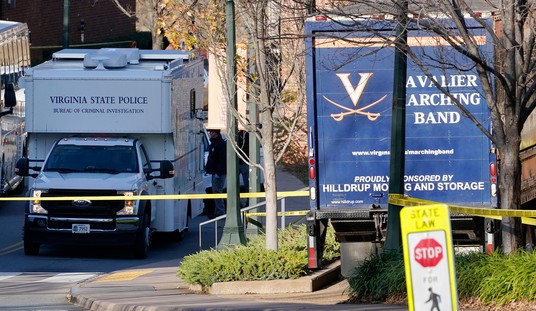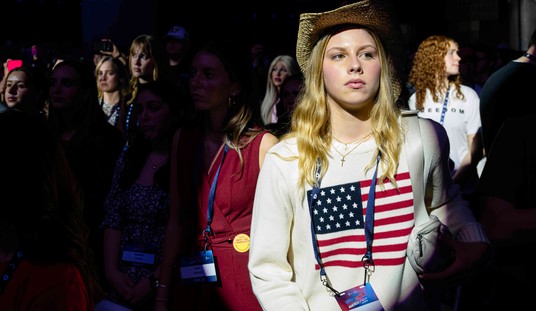This ongoing exercise between popes and the press reminds me of an old Tootsie Pop commercial. “How many licks does it take to get the center?” the ads asked. Maybe the press believes that asking a question often enough will wear down a pontiff in a similar manner — because it seems that the media and activists never tire of this particular exercise. This is what happens when the modern political/cultural paradigm meets the eternal paradigm:
A Swedish female reporter noted that the head of the Lutheran Church who welcomed him in Sweden was a woman, and then asked if he thought the Catholic Church could allow women to be ordained as ministers in coming decades.
“St. Pope John Paul II had the last clear word on this and it stands, this stands,” Francis said.
Francis was referring to a 1994 document by Pope John Paul that closed the door on a female priesthood. The Vatican says this teaching is an infallible part of Catholic tradition.
The reporter then pressed the pope, asking: “But forever, forever? Never, never?
Francis responded: “If we read carefully the declaration by St. John Paul II, it is going in that direction.”
CNN’s Delia Gallagher misses the point in an otherwise interesting analysis:
Pope Francis’ resounding no to women becoming priests may come as a surprise considering the popular narrative of him as a reformer who seeks to bring change to the Roman Catholic Church.
Often seen as wanting to overturn the conservative thrust of recent pontificates, Francis has shown himself to be squarely on the side of Pope John Paul II and Benedict XVI when it comes to women’s ordination.
Let me let everyone in on a little secret: Pope Francis is squarely on the side of Pope John Paul II and Benedict XVI on all matters of doctrine, and in most areas of practice as well. Francis may well be described as a reformer, but he’s not reforming doctrine; he’s mostly reforming the Curia, and placing a new emphasis on pastoral outreach especially with his personal example. The only daylight between Francis and his two predecessors on almost everything else relates to style and emphasis, not substance. Francis isn’t overturning the “conservative thrust of recent pontificates,” which weren’t as conservative as many think anyway.
Reuters’ explanation is a little more misinformed:
Francis has previously said that the door to women’s ordination is closed, but proponents of a female priesthood are hoping that a future pope might overturn the decision, particularly because of the shortage of priests around the world.
Put simply, that’s nonsense. In the first place, there may be shortages of priests in the Western world, but not so much in emerging centers of Catholicism such as Africa and Asia. Many priests from those regions have come to Western countries to fill those roles. The usual suggestion for dealing with the shortage is to allow for married male priests in the Latin rite, which has restricted ordination to single men for a thousand years as a practice rather than doctrine. No one seriously suggests ordination of women as a solution … at least no one who knows Catholic doctrine on the matter.
Francis didn’t explicitly name the document in which St. John Paul settled this question firmly as doctrine, but it’s Ordinatio Sacerdotalis, written in May 1994. The apostolic letter makes it clear that restricting ordination to men is not “a merely disciplinary” action, but a doctrine which by definition is unchanging and unchangeable.
Gallagher goes on to note more accurately that Francis wants to emphasize an avoidance of clericalism, in that he wants the ordained to serve the laity rather than rule them. That’s also what St. John Paul wrote in the same apostolic letter. “For this reason,” he wrote 22 years before Francis had to repeatedly offer the same answer, “the Declaration Inter Insigniores recalls: “the only better gift, which can and must be desired, is love (cf. 1 Cor 12 and 13). The greatest in the Kingdom of Heaven are not the ministers but the saints.””
The apostolic letter concludes thusly:
Although the teaching that priestly ordination is to be reserved to men alone has been preserved by the constant and universal Tradition of the Church and firmly taught by the Magisterium in its more recent documents, at the present time in some places it is nonetheless considered still open to debate, or the Church’s judgment that women are not to be admitted to ordination is considered to have a merely disciplinary force.
Wherefore, in order that all doubt may be removed regarding a matter of great importance, a matter which pertains to the Church’s divine constitution itself, in virtue of my ministry of confirming the brethren (cf. Lk 22:32) I declare that the Church has no authority whatsoever to confer priestly ordination on women and that this judgment is to be definitively held by all the Church’s faithful.
One has to smile at St. John Paul’s frustration in noting that “in some places it is nonetheless considered still open to debate.” Plus ça change, plus c’est la même chose. Regardless, St. John Paul closed off the debate with this definitive statement of doctrine, even if it didn’t keep his successors from having to keep explaining that fact over and over again.
One interesting point about the apostolic letter is that St. John Paul only mentions the one argument for restricting ordination to males, which is that Jesus only chose men for His Apostles despite the presence of His mother Mary among them. Gallagher adeptly references the second theological argument, which is that priests must act in persona Christi capitis during the Mass and transubstantiation. The catechism (which he propagated) explains the doctrine more fully, as I wrote two years ago:
Priests act in persona Christi capitis during the Mass (CCC pp 875), especially during the Liturgy of the Eucharist. The congregation becomes an earthly part of the eternal celebration of the Wedding Feast of the Lamb, as described in Revelation, in which the Church becomes the Bride of Christ. The priestly authority comes directly from Christ Himself through the apostolic succession of the bishops and their authority to ordain priests for this purpose. It is in this role that priests can effect the transformation of the sacrifice of bread and wine into the body and blood of Christ through the unity of the Holy Spirit with Christ and God the Father, as seen in Revelation, and offer it to the faithful as a sacrament of union with Christ and that eternal celebration. Acting in persona Christi capitis, the priest acts in place of Christ the bridegroom in that moment in time here in the world (CCC pp 1348). Also, the priest’s role in the Mass occurs through the power of Christ the bridegroom (CCC 1548). This is how the two will become one flesh, as in sacramental marriage in this world. If the congregation is the bride, the priest as groom must be male to act in persona Christi capitis, according to the teachings of the Catholic Church.
None of this is particularly secret, by the way. As the references show, the Catholic Church teaches all of this quite openly. The belief in the actual presence of Christ in the Eucharist and the Liturgy of the Eucharist as a connection to the one sacrifice at the eternal wedding feast forms the substantial argument for ordaining only men to the priesthood. (It’s worth noting that the recently restored order of the diaconate is currently only open to men, but the Church is discerning on that practice, since deacons cannot serve in the place of priests during the Liturgy of the Eucharist anyway.) However, it’s at least a fair point to admit that many Catholics never hear this teaching, for reasons of poor catechism at home or in churches and schools.
When I wrote that, a number of people told me they’d never heard of this, but a review of the catechism will confirm it. As I noted at the time, Coming Soon and/or The Lamb’s Supper explain this dynamic of the sacrifice more fully and better.
It has been said with a large measure of accuracy that change within the Catholic Church gets measured by decades and centuries, not by years, months, or days. The Second Vatican Council (or Vatican II, if you like) provides a case in point; it has taken fifty years for the episcopacy to work out all of its ramifications, and to translate them into effective practice. The result has sometimes confounded the faithful, in part because catechesis has declined significantly, but has also boosted the status of the laity and encouraged much more energetic engagement.
Still, what changes in the Catholic Church is practice, not doctrine. Unlike other organizations, the Catholic Church does not see its mission as one of adaptation to modern norms. Rather, it takes as its mission the bearing of eternal truths and two millennia of teachings on them, with ongoing adaptations of practice to demonstrate their relevance in all ages. It’s difficult for many of us — and not just the press — to shift from a political/cultural paradigm to the eternal, but that is precisely what faith calls us to do, which is why the Catholic Church remains focused on the latter.








Join the conversation as a VIP Member